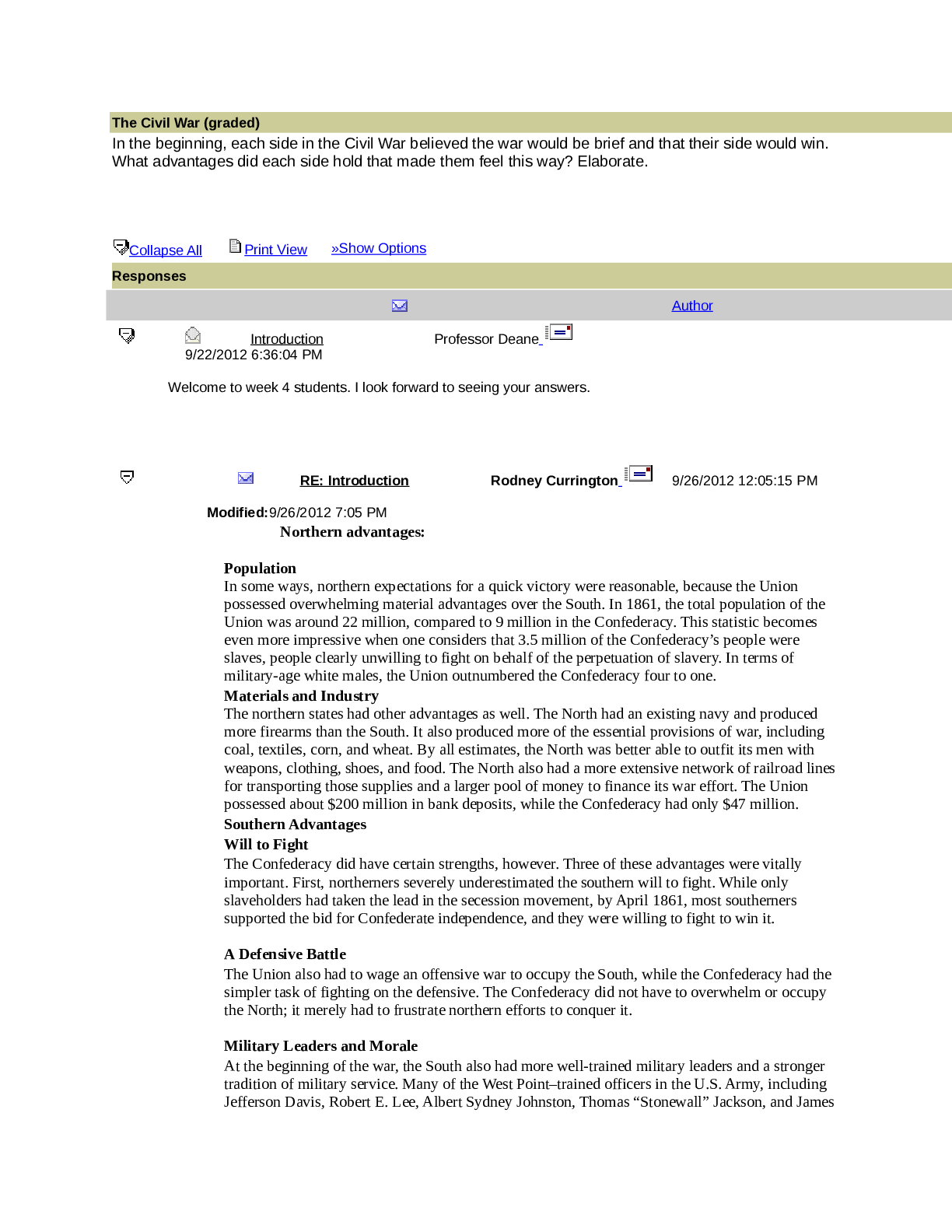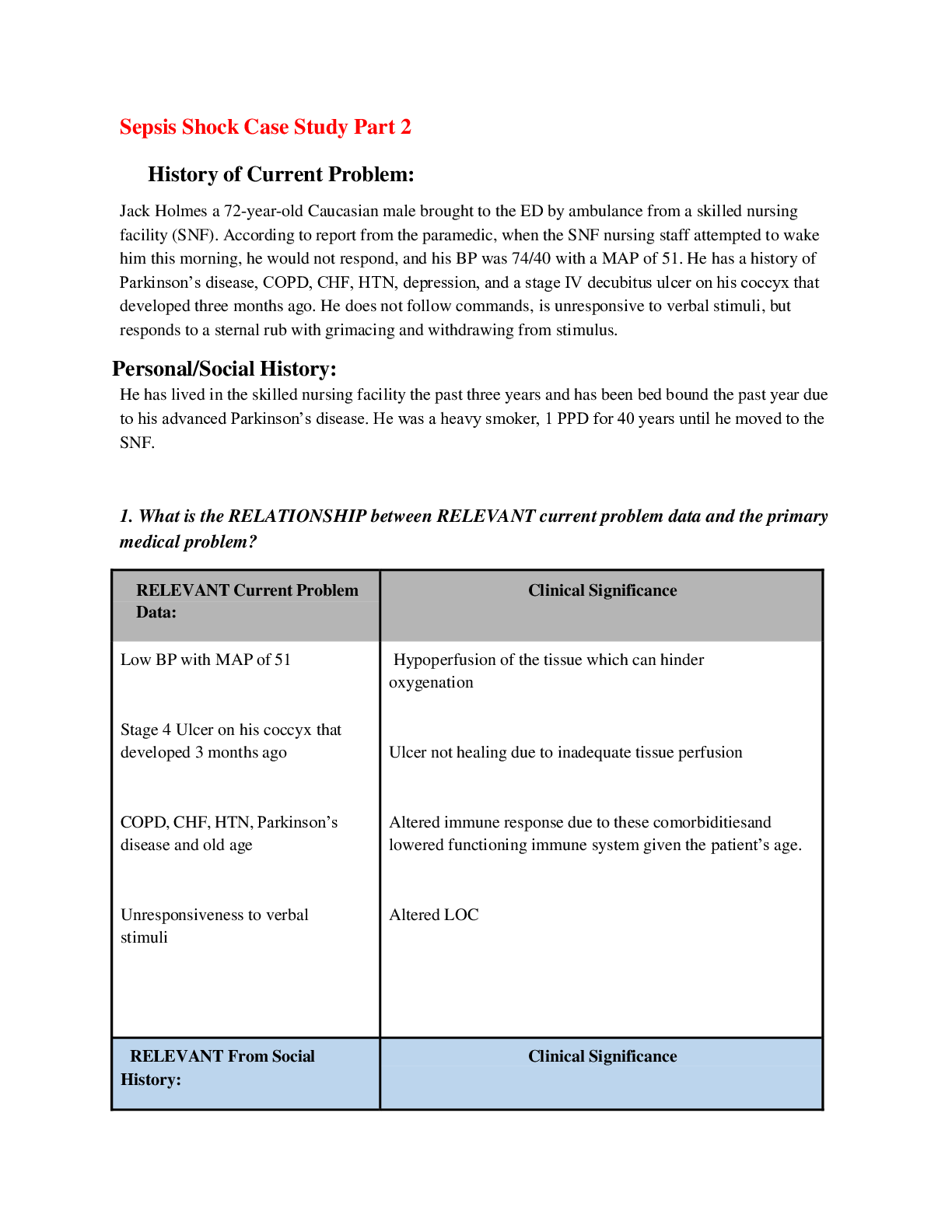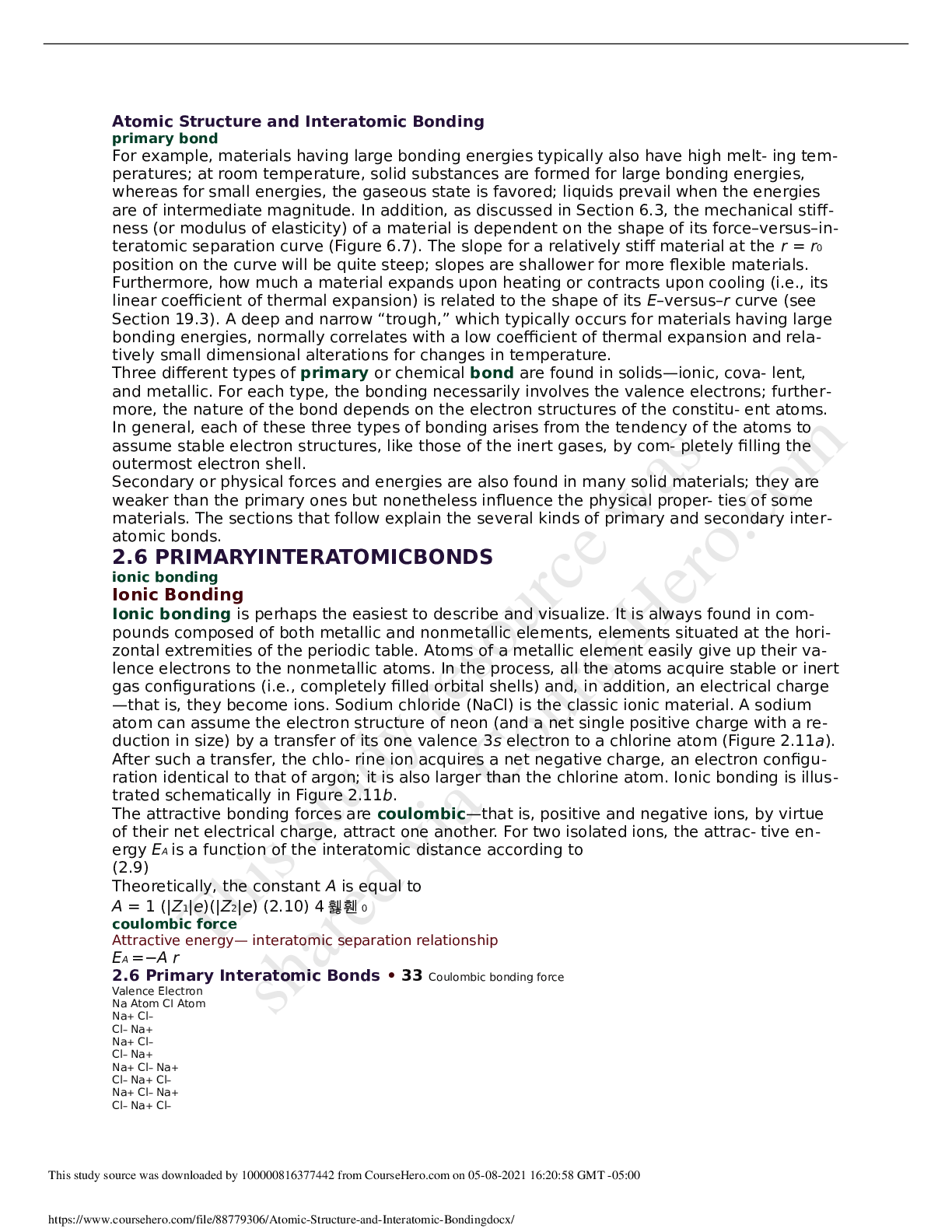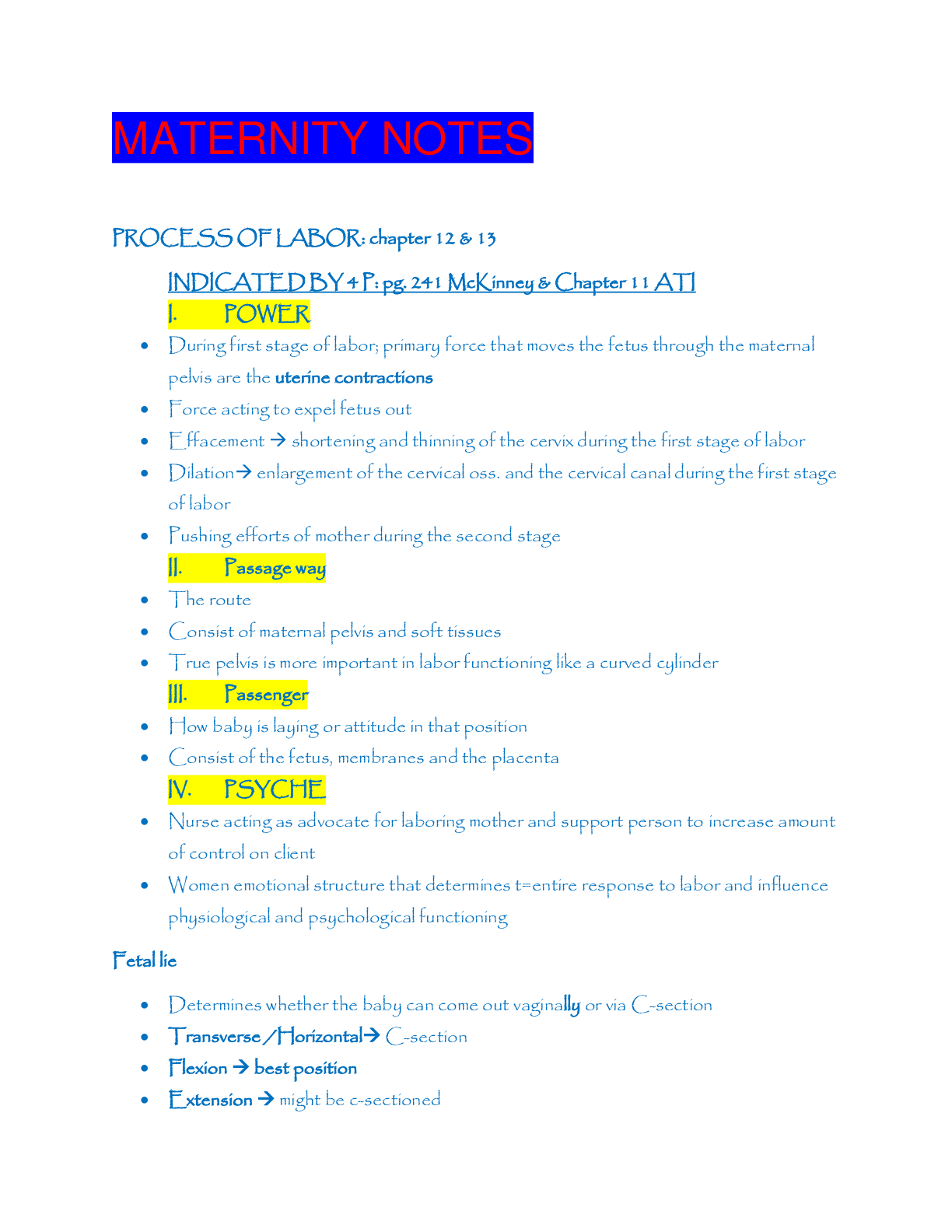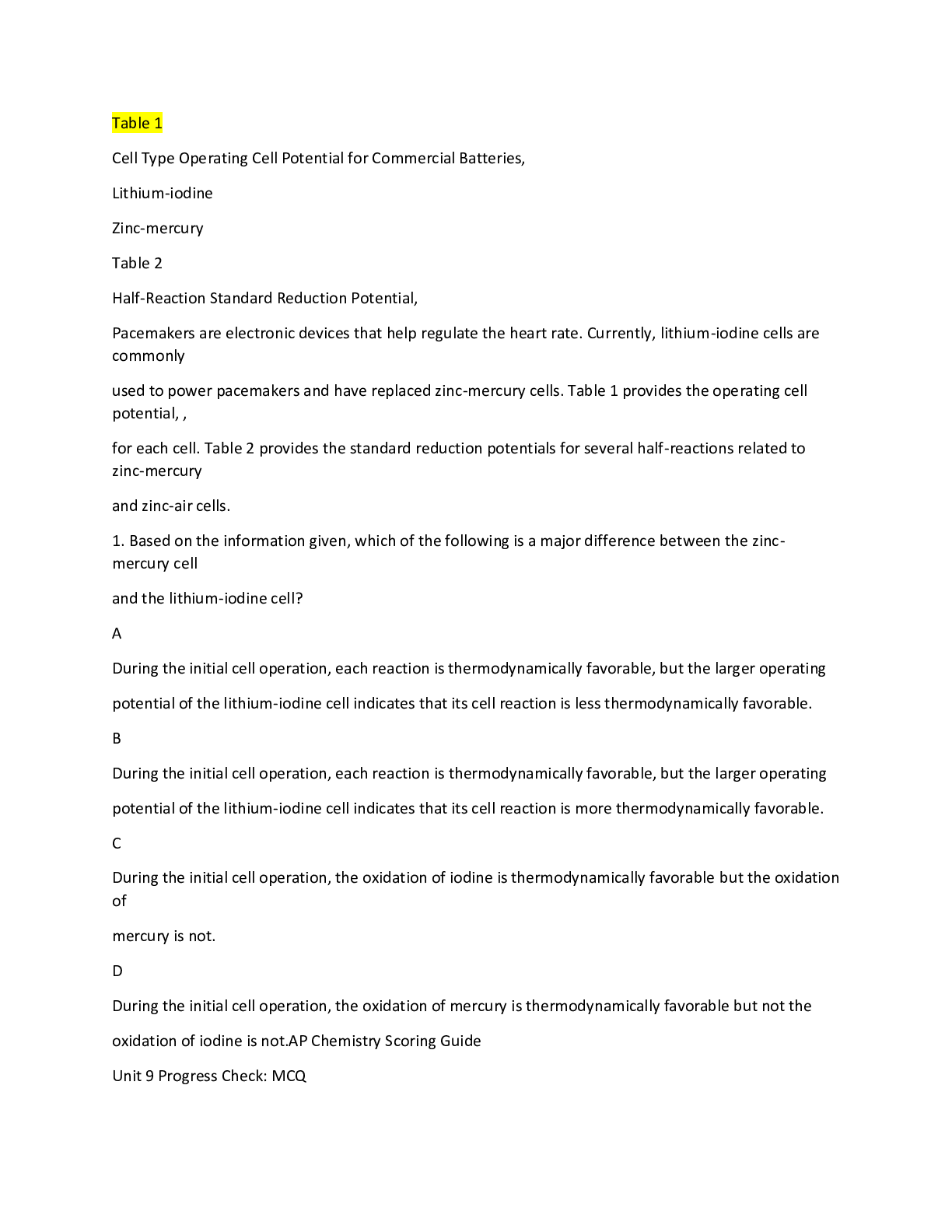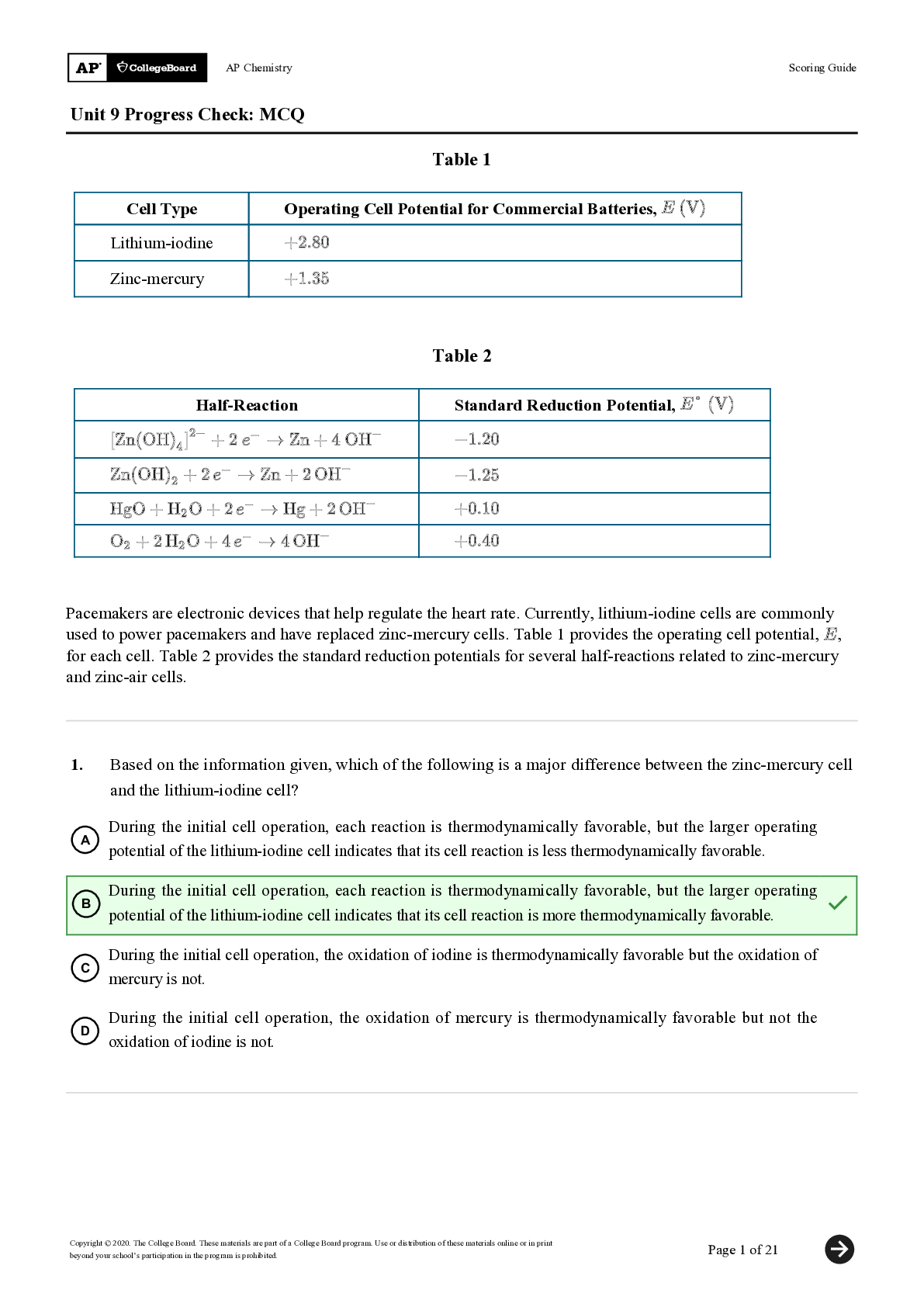Biology > ESSAY > LATEST Strayer University, North Charleston - HSA 535APPLICATIONS OF EPIDEMIOLOGY (All)
LATEST Strayer University, North Charleston - HSA 535APPLICATIONS OF EPIDEMIOLOGY
Document Content and Description Below
1 APPLICATIONS OF EPIDEMIOLOGY-A CASE STUDY Introduction Epidemiology is a discipline that describes, quantifies, postulates causal mechanisms for diseases in populations, and develops methods for... the controls of diseases. The Good Health Hospital has become overwhelmed with an outbreak of E. coli in Ward 10 on their second floor. http://www.webmd.com/a-to-z-guides/e-coli-infection-topic-overview states, E. coli is a bacterium commonly found in the intestines of humans and other animals, where it usually causes no harm. Some strains can cause severe food poisoning, especially in old people and children. The Good Health hospital has 6 person nosocomial infection of E. coli. The role of the social science researcher is to investigate dissimilar patterns and causes of the E. coli and its bearing on the patients. The social science researcher should understand that litigation issues are in question because the hospitals are anticipated to safely inhibit the spread of any diseases from patient to patient. In many cases Good Hospital could be held liable for negligence. By contacting the DOH and CDC for data related to nosocomial diseases, the researcher can gain valuable information about different ways to contain the spread. In this paper, I will analyze Good Health Hospital’s records, itemize recent nosocomial infections that occurred within the past year, categorize the different parameters used in the compilation of data into the information, propose at least six questions for the health care administrator, identify, a targeted audience within Good Health Hospital, a prepare an implemented plan based on your hypothetical meeting with the hospital health care administrator, suggest at least five recommendations to your department head based on the steps taken in the2 implementation plan, and use these approved recommendations and design a safety protocol itinerary that must be placed in public areas of the hospital. APPLICATIONS OF EPIDEMIOLOGY-A CASE STUDY Analyze Good Health Hospital’s records and itemize recent nosocomial infections that occurred within the past year. In your report, categorize the different parameters (i.e., person, time, place, ethnicity, and gender) used in the compilation of data into the information summative. Nosocomial infections are infections are acquired in hospitals and other healthcare facilities. To be classified as a nosocomial infection, the patient must have been admitted for reasons other than the infection. The researchers recognized the outbreak of E. coli was triggered in fact by spoil food from the cafeteria. The E. coli outbreak has six known cases. As a scientific researcher, there is a necessity to realize what E. coli is and how it can spread. In an analysis of Good Health Hospital’s records, the researcher found that there was a large number of nosocomial infections identified and they are as follows: Urinary Tract Infection (UTI), Gastrointestinal infections (GI), Pneumonia, Eye, Cardiovascular System infection (CVS) & Surgical Site infection (SSI) Blood stream infection (BSI), Skin and Soft tissue (SST) Categories of different parameters: Case: Person, Time, Place, Ethnicity, Gender, Age- Skin and Soft tissue infection 20,000 from 2009 to 2011 in Northern Virginia; Asian, African American, Hispanic, Native American and White Male and Females under 20, 15, 45 &+ 65 Case: Person, Time, Place, Ethnicity, Gender, Age-Blood Stream infection- per 3,000 from 2009 to 2011 all states all ethnics men & women.3 APPLICATIONS OF EPIDEMIOLOGY-A CASE STUDY Propose at least six (6) questions for the health care administrator at Good Health Hospital, regarding potential litigation issues with infections from the nosocomial diseases. Rationalize, in your report, the logic behind your six (6) questions. Controlling infectious diseases is one of the most familiar applications of epidemiology at work in the community. Friis, R.H., & Sellers, T. (2014) Hospital acquired infections, also known as nosocomial infections, are a growing problem in the U.S., so it is very important for healthcare providers to provide their patients with the highest degree of care professional skill that is necessary for patients to be healthy. http://secondopinion-tv.org/episode/hospitalacquired-infection states, A nosocomial, or hospital-acquired, infection is exactly what it sounds like – an infection that happens as a result of treatment in a hospital but is secondary to a patient's original admitting diagnosis. Infections are considered hospital-acquired if they first appear 48 hours or more after hospital admission or within 30 days after discharge. The Administrator at Good Health Hospital understand that nosocomial infections are a source of morbidity and mortality in hospital settings and they also understand that they could this could cause lawsuit matters. There are six questions that the Good Health Hospital Administrator could propose regarding litigation issues about nosocomial diseases: (1.) what is the primary goal of nosocomial infections control at Good Health Hospital and explain how the hospital will implement their plans to achieve the goal and avoid legal actions against the organization for nosocomial diseases? (2.) What protocols must be available to assist in the4 management of patients with suspected or confirmed viral infections at Good Health Hospital? (3.) What policies would Good Health hospital create and distribute for all staff APPLICATIONS OF EPIDEMIOLOGY-A CASE STUDY members to implement without excuse considering potential litigation problems with infection from the hospital acquired infections? (4.) How does Good Health Hospital plan to prevent the organization from lawsuit cases with infections from health associated infections? (5.) What experience have you had about nosocomial infections considering the economic burden it imposes on health care systems? (6.) What main course would you like for the staff of Good Health Hospital to be trained on against nosocomial infections and that which will enable them to prevent future lawsuits? These questions are important because nosocomial infections are rising in the healthcare systems. These questions will help the administrator prepare him or herself with the right technology and equipment to fight the diseases and any litigation that may come forward against the hospital. Identify a targeted audience within Good Health Hospital, and prepare an implementation plan based on your hypothetical meeting with the hospital health care administrator. Propose four steps that will be useful in the final implementation plan. All hospitals have infection control procedures and policies, and staff needs to take every precaution to avoid infections. However, the risk of infection can never be completely eliminated and some people have a higher risk of acquiring an infection than others. Some people’s immune systems are not as strong as others. A target audience within Good Health Hospital would be people with defective immunities, people with diabetes, elderly, premature5 babies, and people with diseases that compromise their immune system or people who are being treated with chemotherapy or steroids. Hospital acquired infections usually occur two to APPLICATIONS OF EPIDEMIOLOGY-A CASE STUDY three days after admission to hospital. Hospital infections occur at a cost to the community and the patient. However, I have prepared an implementation plan based on the hypothetical meeting with the hospital health care administrator for the prevention of nosocomial infections and they are as follows: First, the administrator should appoint a team to coordinate a plan for the prevention of nosocomial infections. Secondly, the administrator should make sure that all staff members are properly trained on up to date technology and equipment throughout the hospital. Thirdly, the administrator should provide an orientation on prevention interventions. Lastly, the administrator should provide a budget to the hospital that will be able to provide these implementations for the hospital. The four steps that will be used in the final implementation plan are as follows: http://www.fiercehealthcare.com/specialreports/5-ways-reduce-hospital-acquired-infections states use only copper surfaces in the hospital settings, educate patients and doctors about hand hygiene, embrace the latest technology, emphasize teamwork and communication and cut down on red blood cell transfusions. These four steps will help Good Health Hospital prepare for any infections and improve quality of care. This will also reduce infections and other adverse events which are the key to the future of healthcare delivery. Suggest at least five (5) recommendations to your department head based on the steps taken in the implementation plan. Provide rationale for your suggestions.6 Implementation plans are the responsibility of all the employees. The implementation of this plan will bring about change meant to help improve the hospital and solve a problem. http://smallbusiness.chron.com/importance-business-implementation-34571.html states, the APPLICATIONS OF EPIDEMIOLOGY-A CASE STUDY implementation of a plan brings about change meant to help improve the company or solve a problem. The changes can occur to policies, management structures, organizational development, budgets, processes, products or services. Since the status quo can be detrimental to a company, change can help improve the work environment and/or the customer experience. There are five recommendations that I would recommend to my department head based on the steps taken in the implementation plan and they are as follows: (1) Align work with experience and training, (2) Use team-based care model, (3) Proactively reaching out to patients, (4) Offer flexible hours based on patient demand, (5) Link physicians schedules, so that the scheduler can view available appointments for physicians across the locations. Implementation plans are important for moving an organization forward. When an organization fails to implement and execute its strategies properly, it fails to move forward and grow. When an organization implements and executes a plan successfully, there must be "motivational leadership," a plan of action and "performance management." Using these approved recommendations, design a safety protocol itinerary that must be placed in public areas of the hospital. A safety protocol itinerary allows hospital staff and the public to access evidence based information in the prevention and control of infection. For this aim to be accomplished a7 hospital infection control committee needs be formed and they will be in control over the infection needs of the hospital. The ultimate goal of the Safety protocol Itinerary is to provide a real-time snapshot of clinical care information to make the hospital stay less stressful – and APPLICATIONS OF EPIDEMIOLOGY-A CASE STUDY to make the patients better informed – all towards ensuring a good health outcome for those in care. Here is a designed safety protocol itinerary that will be placed in public areas of the hospital: • Infection control assessments monitoring quarterly by infection control team, • Provide straining activity in infection control and auditing compliance • Producing and maintaining up to date hospital infection control policies • Helping carious departments within the hospital in their endeavors to reduce healthcare associated infections and implement compulsory hand washing policy • Verification of infection cases or possible risky procedures Conclusion http://sph.unc.edu/epid/epidemiology-research/health-care-epidemiology-learning-objectivesand-courses/ states, Health Care Epidemiology are to train competent and innovative investigators who will improve the health of the population and to contribute to this field through research and service. Health care epidemiology broadly includes clinical research, outcomes research, and the juncture between epidemiology and health policy. In this case study, the role of the social science researcher was to investigate dissimilar patterns and8 causes of the E. coli and its bearing on the patients. The social science researcher understands that litigation issues which are in question because the hospitals are anticipated to safely inhibit the spread of any diseases from patient to patient. APPLICATIONS OF EPIDEMIOLOGY-A CASE STUDY References: • http://sph.unc.edu/epid/epidemiology-research/health-care-epidemiology-learningobjectives-and-courses/ retrieved from the internet on July 21, 2015 • http://smallbusiness.chron.com/importance-business-implementation-34571.html retrieved from the internet on July 21, 2015 • http://www.fiercehealthcare.com/special-reports/5-ways-reduce-hospital-acquiredinfections retrieved from the internet on July 20, 2015 • http://www.webmd.com/a-to-z-guides/e-coli-infection-topic-overview retrieved from the internet on July 18, 2015 • Friis, R.H., & Sellers, T. (2014). Epidemiology for public health practices (5th ed.). Burlington, MA: Jones& Bartlett Learning. [Show More]
Last updated: 2 years ago
Preview 1 out of 8 pages
.png)
Buy this document to get the full access instantly
Instant Download Access after purchase
Buy NowInstant download
We Accept:

Reviews( 0 )
$19.00
Can't find what you want? Try our AI powered Search
Document information
Connected school, study & course
About the document
Uploaded On
Feb 19, 2021
Number of pages
8
Written in
Additional information
This document has been written for:
Uploaded
Feb 19, 2021
Downloads
0
Views
113

